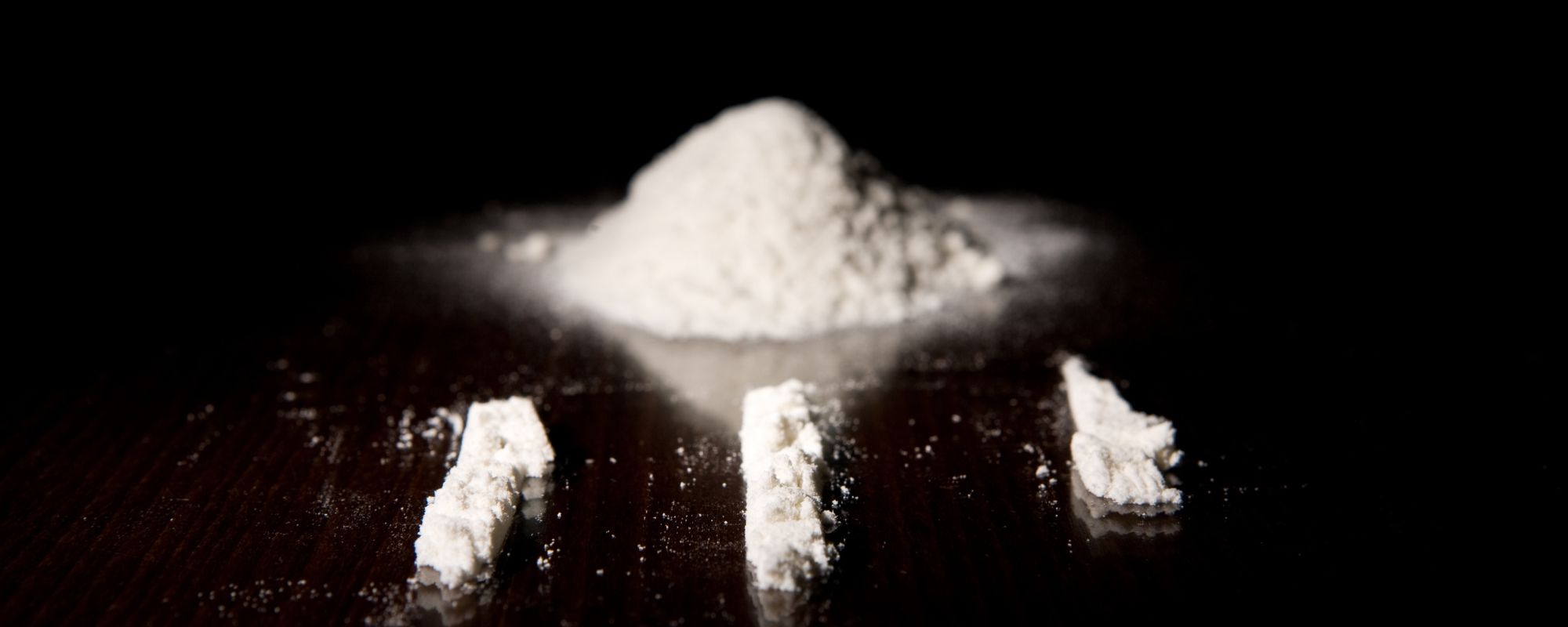There are a myriad of reasons why someone might start using stimulants, especially methamphetamines, also called crystal meth. Crystal meth detox isn’t only about physical detoxification. It’s a necessary first step before embarking on a healing journey to recovery, with the help of professional guidance, to understand the underlying reasons for using it and knowing that your worth, or a loved one’s, doesn’t rely on using meth.
“People who use methamphetamine like it because it gives them energy and makes them feel confident, alert, and strong for many hours,” notes the Centre for Addiction and Mental Health (CAMH). “Some like it because it makes them feel sexy. And some like it because it takes away their appetite, and they feel like they don’t need to eat.”
These initial upsides of taking meth, even if well-intentioned, can quickly become short-lived. Because of its powerful, potent,t and long-lasting effects, meth is highly addictive, making quitting incredibly difficult for anyone who has developed a dependence or meth abuse disorder.
Worse still is that compared to other stimulants, meth is known to stay in one’s system for a longer time, making meth detox — the process of safely removing the drug from the body — such an important first step toward recovery.
What Is Crystal Meth?
Methamphetamines arrive in different forms, crystal meth gets its name from its appearance as glass-like, crystalline rocks, which distinguishes it from powered meth.
Crystal meth is a synthetically made drug and acts on the central nervous system when ingested, triggering a surge of feel-good neurochemicals like dopamine. This dopamine surge — a short-lived euphoria characteristic of a meth high — is central to its highly addictive nature since it sends signals to the brain to keep repeating behaviors that feel good.
Unfortunately, this pursuit of meth’s effects has led to widespread use and abuse. According to the Substance Abuse and Mental Health Services Administration (SAMHSA), nearly 2 million people use meth each year, while about 500 people try meth for the first time every day.
Who Uses Meth?
Studies also suggest that those from lower socioeconomic backgrounds, facing challenges like limited education and unstable housing, are more vulnerable to risky meth use.
Most of the crystal meth available in the U.S. is made and imported from Mexico, although “cooking” crystal meth in clandestine, makeshift home labs is also common. Illegal meth is unregulated, and there’s no way to know where it was made or what ingredients were used. Crystal meth can be made with everything from pseudoephedrine (found in cold medicines) to batteries, drain cleaner, fertilizer, nail polish remover, and paint thinner.
How Do People Use Crystal Meth?
Typically, crystal meth rocks are crushed down and smoked in a glass pipe,e not unlike smoking crack cocaine. This is the most common way people take the drug, although it can also be injected directly into a vein or one’s anus or swallowed in pill form. The crystals can also be chopped up and snorted.
Another method involves heating up a glass stem, placing it over a meth rock, and inhaling the vapors.
Smoking or injecting produces a high within seconds since it’s the quickest way to deliver meth to the brain, compared to snorting or swallowing, which can take three to five minutes and 15 to 20 minutes, respectively. A meth high can last 12 hours or longer.
Is Crystal Meth Addictive?
Changes in brain chemistry caused by chronic meth use can lead to compulsive drug-seeking despite negative consequences, mainly from the way the drug interacts with one’s dopamine levels and reinforces drug-seeking behavior.
Like most drugs, it’s easy to establish a tolerance to meth. Your dopamine levels are reduced each time you use the drug, leading users to take more of it subsequently to match their desired high.
Crystal meth’s prolonged presence in the brain, unlike other stimulants that are more rapidly metabolized (such as cocaine), can lead to a higher risk of addiction. Because it isn’t eliminated from the body as quickly, it continues to exert its effects for a longer period, leading to a more sustained high and increasing the likelihood of developing dependence.
What Is Meth Detox?
The very mention of “meth detox” might sound intimidating to someone who doesn’t know help is available. Meth detox is not about quitting cold turkey or dealing with meth withdrawal symptoms on your own, without any support; rather, it’s a carefully planned and monitored process of safely removing the drug from one’s body under medical supervision.
Crystal meth detox is the first proper step in recovery since it addresses your physical dependence on the drug. Once it’s flushed from the body, you have a clean slate in which to build sobriety upon; a blank canvas to begin painting a new, clean and sober picture.
Because detoxing from meth can pose various meth withdrawal symptoms, a proper meth detox is best completed in a proper residential treatment center. In Spokane Heights, this means a welcoming environment with the comfortable accommodations of a private or semi-private room with a bed, furnishings and TV, food and drinks, and a detox team at your disposal composed of doctors, nurses, and other medical professionals who are there to serve your needs.
How Long Does Meth Detox Take?
Asking, “How long does it take to detox from meth?” is a common question, and the answer is that it’s a phased process, not a singular event.
Your own meth detox timeline will depend on the severity and length of addiction, your individual metabolism and overall physical health, if you’re using other drugs or alcohol, or any co-occurring disorders or medical conditions, you might have.
Generally, how long meth rehab take are determined by two distinct phases of withdrawal?. The first, known as post-acute withdrawal, lasts from a week to 10 days of weaning oneself off meth. A second subacute withdrawal period can take up to two additional weeks to subside, after which formal meth addiction can begin in earnest.
What Are the Symptoms of Meth Detox?
Studies show that meth withdrawal symptoms are at their most heightened and intense within 24 hours of stopping use. Symptoms during this first day may include meth and food cravings, and depression.
How do withdrawal symptoms progress during meth detox? During phase 1 at a treatment center, you may experience a first wave of withdrawal symptoms including continued cravings, headaches, physical shaking/tremors, depression or anxiety and increased appetite and sleep.
During phase 2, withdrawal symptoms transition from physical to mostly psychological as your brain works to rebalance and recalibrate both the neurochemicals and central nervous system messaging processes disrupted by meth abuse. Here, actions like motivation, mood, and self-control may be affected, lingering and dissipating as detox comes to an end.
Reach Out for Help With Drug Addiction
Are you struggling with substance abuse?
Royal Life Centers at Spokane Heights is here to help you recover. Because we care.
How Can a Treatment Center Help with Meth Detox?
Throughout the entire meth detox timeline, the one thing that can’t be overlooked is the support of staff — doctors, nurses, therapists, and the whole team. They live by a mission statement of “Because We Care,” putting those words into action by making the recovery of anyone who comes on-site their number one priority.
The Spokane Treatment Center balances safety with structure and clinical care with compassion for how to detox from meth the right way. The medical staff does not leave your side, monitoring your vital signs around the clock, attending to any emergencies, or prescribing medication to ease physical pain or psychological distress.
Managing withdrawal symptoms during those critical withdrawal phases is only the start. They’ll provide emotional support and address any dual-diagnosis disorders common among individuals struggling with addiction.
Medication-Assisted Treatment for Meth Detox
Detox and a comprehensive treatment program are sometimes enhanced with medication-assisted treatment or MAT. By adding certain medications specifically designed to treat meth addiction, you’ll find the crystal meth detox process more manageable. Here are some medications commonly prescribed during addiction treatments:
Bupropion
Bupropion is an antidepressant commonly prescribed for smoking cessation and depression, but it may be used for meth addiction because it’s believed to change levels of dopamine in the brain, the very neurochemical negatively impacted by meth abuse.
Naltrexone
Naltrexone, typically used for opioid and alcohol addiction, can also help reduce cravings, control physiological dependence, and avoid relapses of crystal meth.
In fact, a recent study published in the New England Journal of Medicine indicated that combining injectable naltrexone and oral bupropion was safe and effective in treating adults with moderate or severe methamphetamine use disorder.
Mirtazapine
Mirtazapine, another antidepressant, is another MAT option for meth withdrawal since it’s believed to restore chemical balance in the brain and encourage positive communication between central nervous system cells.
Antipsychotics
Methamphetamine psychosis — typified by hallucinations and paranoia — will affect nearly 25% of heavy meth users in a given year, according to studies. Antipsychotic medications such as olanzapine, quetiapine, and aripiprazole have proven effective in treating these symptoms during meth detox.
Professional Crystal Meth Detox at a Treatment Center
Beyond meth detox, a prerequisite to formal crystal meth addiction treatment, a professional treatment center seeks to offer comprehensive programs, from detox to aftercare and beyond, to address the underlying causes of addiction and facilitate your long-term recovery.
research-based Psychotherapy
What does “research-based” mean? Therapies like cognitive-behavioral therapy (CBT) and dialectical-behavioral therapy (DBT) have been shown by evidence to be effective in treating drug abuse disorders, and meth abuse disorder is no exception.
These talk therapies, either one-on-one or in a group setting, help you get to the heart of your relationship with meth. What are the root causes of your dependency? What insights can you gain? Can you identify your triggers, and what coping mechanisms can be developed? Psychotherapy is an exploratory tool with a trusted therapist to achieve long-term recovery.
Holistic Recovery
Holistic approaches, such as yoga, mindfulness meditation, sound healing, and biofeedback, aim to treat your entire being — body, mind, and spirit — instead of just one’s addiction symptoms.
Hand in hand with psychotherapy, the holistic treatment encourages self-growth by exploring your emotions, building coping skills, processing trauma, and developing relapse prevention strategies — all the while solidifying your recovery in a transformative way that elevates your essence, your well-being,g and your life, going forward, free of drug use.
Case Management and Aftercare
Recovery technically never ends. It’s a life change that must be preserved and maintained until the end of your life. Once your time in treatment reaches the calendar end, now it’s time to connect with a case manager.
They will help assist you with what’s called aftercare — a 12-week program that acts as a bridge from treatment to independence. Here, they’ll help you choose between participating in either a partial hospitalization program or an intensive outpatient program, both of which serve as a soft transition out of therapy and back into regular, autonomous, independent life.
If you or a loved one has grappled with a crystal meth addiction, we know that your questions are many. Is help and recovery possible? The answer is yes. We’re here to provide the answers and set you on the journey to recovery. Get free and confidential help, 24/7, by calling us today. A single phone call can change your life.



















